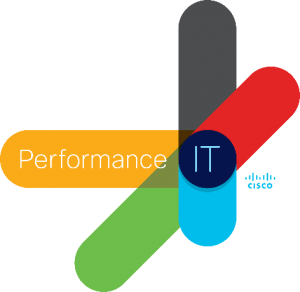Multicloud has arrived, but legacy IT networks are struggling to keep up. And it’s causing operational bottlenecks, higher costs, and inflated timelines for changes.
Thus, multicloud is making the need for network transformation clear. But financial constraints coupled with traditional operating models prevent many from realizing the outcomes needed by their various business units.
Cisco Performance IT is built to make network transformation possible
 At Cisco, we developed a methodology to help financially facilitate network transformations, based on a customer’s unique situation and business needs. It’s called Cisco Performance IT.
At Cisco, we developed a methodology to help financially facilitate network transformations, based on a customer’s unique situation and business needs. It’s called Cisco Performance IT.
We begin by examining the current state of the customers’ network infrastructure to get a clear picture of the financial and operational scenario. We also look for issues that limit IT operations and negatively affect the business, including how the network impacts deployment flexibility and the amount of time required to deliver changes in functionality.
Ultimately, we’re pinpointing inefficiencies that can be remedied and areas that can be optimized to benefit the business and help fund the transformation—or, in some cases, fund it entirely.
Typical legacy network challenges organizations face
As we work with customers, we see several common legacy network realities that hold back organizations. Across the board, they are challenges brought about by supporting a forward-thinking multicloud strategy with yesterday’s network technologies and processes.
Let’s take a look at the most common examples.
Operational constraints: Manual processes and limited tools
Moving to multicloud requires agile, automated operations and total visibility—which legacy networks are seldom built to provide. Instead, the lack of automation and end-to-end management causes constraints that lead to operational complexity, drive up costs, and increase the likelihood of errors, particularly when implementing changes.
These constraints are great targets to remedy—because doing so with more efficient technology solutions delivers operational benefits that free up money to help fund the project, or possibly pay for it completely.
More specifically, these issues typically look like the ones below. And if you are facing any of them, your network might be a good candidate for transformation.
- Limited configuration and compliance management capabilities due to disparate toolsets
- Segmented remediation and upgrades that do not address the end-to-end issue
- A large percentage of major incidents resulting from errors made during changes
- Manual change and deployment processes, due to limited automation and orchestration capabilities, that cause delays, errors, and potential security risks
- Lack of correlated visibility across applications, network, and distributed systems that leads to complexity in troubleshooting and difficulty in being proactive
Flexibility and timing: Impacts on deployment
When your network’s architecture and operational workflow limit your ability to quickly integrate new solutions, it slows down IT’s ability to react to business needs.
This issue is exacerbated in the multicloud world, because adding new cloud partners requires rapid provisioning and configuration of network services.
By removing bottlenecks, your organization becomes faster and more flexible.
These challenges generally look like this:
- Extended timelines due to manual processes and lack of end-to-end visibility—both of which contribute to increased costs
- Risk of changes causing incidents that could have been prevented—due to configuration drift over time and lack of standardization
Learn more about Cisco Performance IT today
Our approach identifies the operational challenges your legacy network is creating so that our experts can recommend new architectures to alleviate them.
The process shows you how architecture transformation can solve these problems—and how the upgrades create operational efficiencies to offset the transformation costs.
See the possible financial benefits of
Cisco Performance IT
Subscribe to the Networking blog


CONNECT WITH US